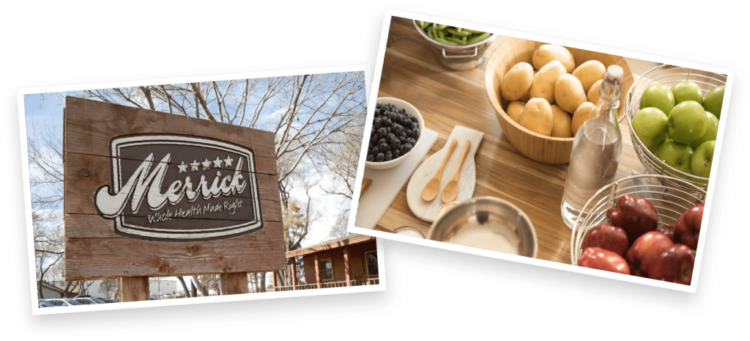
“Outside of people’s kids, there are very few things people care about as much as their pets.”

Barbara Liss has worked in the CPG space for years. Starting her career at General Mills and Beam Global in brand management roles, she later moved on to work as Director of Digital and Social Media for Quaker, and in 2017, became Vice President of Marketing at Merrick Pet Care, a high growth pet food company owned by Nestle Purina.
Pet food is likely not the first thing that would come to your mind if someone asked you about high growth industries. However, pet food, especially premium pet food, is a very high growth category. In fact, General Mills recently bought pet food brand, Blue Buffalo, for $8 billion. The number of pets per household is growing. The number of people with pets is growing. And the amount of money people are spending on their pets is growing. Barbara said, “Look at Amazon and the resources they’ve dedicated to get into the pet business. Look at a company like Chewy.com and how they’ve grown exponentially. It’s a really exciting business to be in. Companies like General Mills and Nestle are looking at premium pet food to be their growth engines and that’s an awesome place to be.”

Merrick Pet Care was founded by Garth Merrick and his wife in 1988 with the goal of making the “wholesome, nutritious recipes that pets deserve.” They started with natural dog treats. The first was called Flossie and it was a treat that also helped clean dogs’ teeth. Dental treats are common today, but Flossie was the first of its kind. The Merricks then began creating handcrafted, all-natural pet food. In 2004, Merrick created their award-winning grain free dry recipes with chicken, beef or buffalo as the first ingredient. After 20 years of innovation, Merrick started the “Real Food Revolution” in 2012 by reformulating their Classic and Grain Free lines of dog food with new recipes, and in 2013, they expanded the line to include cat food as well. Today, Merrick is still dedicated to crafting wholesome recipes and delivering superior nutrition for dogs and cats. Barbara said, “When you work at larger companies, you often get excited by small growth. To now work for a company that is growing organically at 20-30% per year is an incredible opportunity.” Merrick is working toward becoming a billion company, which will require different skills across operations, R&D, finance, and marketing.
Although working at such a high growth company is new to Barbara, her experience in CPG allows her to see the similarities in marketing across different industries. She said, “All brands are fighting for an individual’s time, whether you’re competing for share of wallet, share of mind, or share of anything. Making sure you know your consumer really well is important whether you work at Pepsi, or Merrick, or a startup.” At the end of the day, all marketing is about breaking through the clutter and getting a particular message across – one that will hopefully drive the business. At Quaker, everyone knew the brand, but it had lost some of its relevance. Barbara had to focus on getting to know their consumers and engaging with them in a different way. At Merrick, the challenge has been that many people don’t know the brand, so, Barbara must figure out which consumers are going to be the most open to trying a new brand or to switching brands. Then the challenge becomes creating and delivering the right message, in the right place, at the right time.

Marketing messaging to pet owners is about emotional connection and humanization. Today, consumers are more conscious of the ingredients in the food they eat, and this is translating into how people are feeding their pets. Barbara said, “To work on an emotional category is really appealing as a marketer who wants to tell stories and connect with consumers. Outside of people’s kids, there are very few things that people care about as much as their pets.” Digital and social media marketing allows Merrick to communicate with consumers on an emotional level and has also has helped build 1:1 connections better and faster than traditional mediums. Barbara also said, “We really focus on telling the right stories that resonate, whether that’s just cute puppy stories or rescue stories, but then we are able to follow that up with a, ‘Hey remember us – we just gave you that great story? Well, now we’re going to tell you about the great food we have.’ And digital allows you to execute that one-two punch.”
As the pet food category becomes more crowded, brand differentiation is more important than ever. Barbara said, “When Merrick took off, we were one of the first companies to use real, whole fruits and vegetables and high quality, deboned meat. Today, it’s somewhat table stakes. So, how do we storytell? How do we differentiate? How do I get somebody who goes into the store and simply buys the same bag they always buy, to switch?” ”
In pet stores, the pet food aisle can be a very complicated and busy one. Approximately 60% of consumers show brand loyalty to a certain line of pet food, but there remains a great deal of switching due to price, pet response, and aging out. In Barbara’s view, it is an industry that is built on recommendation. She said, “Merrick has done a great job of driving growth through innovations, which goes back to really understanding your pet parents’ needs and where there is opportunity.” Focusing on this core idea has allowed companies like Merrick to continue to excel and drive double digit growth for many years and for many more to come.